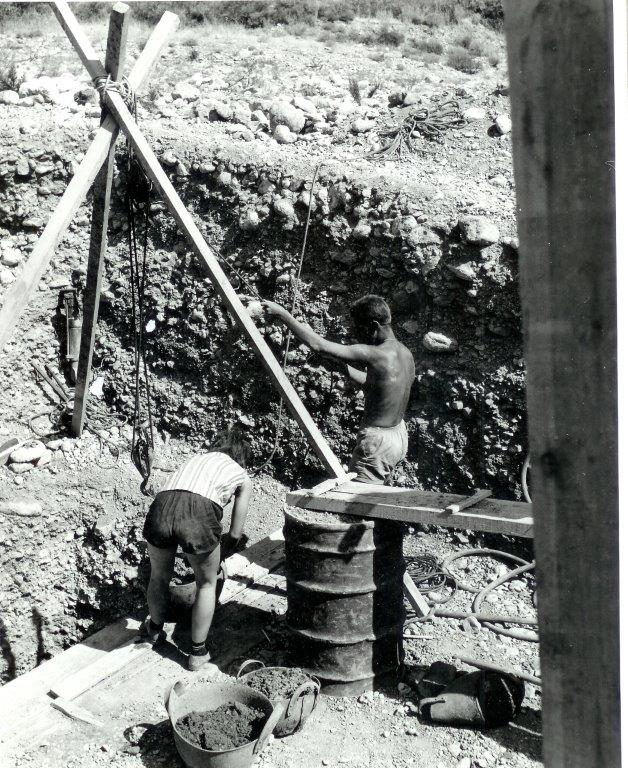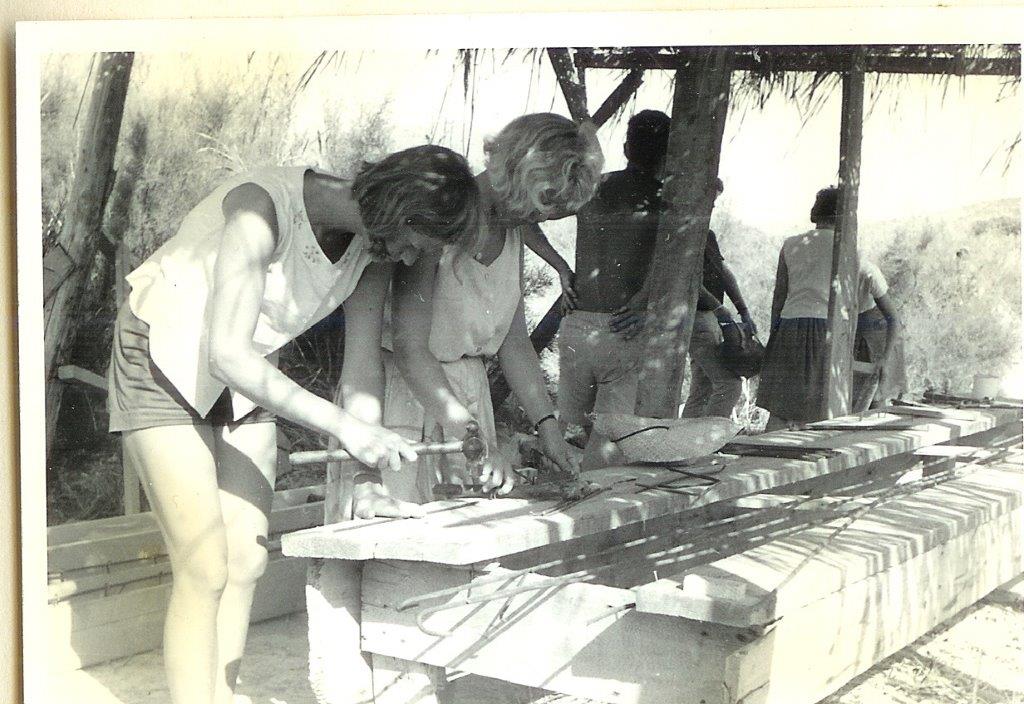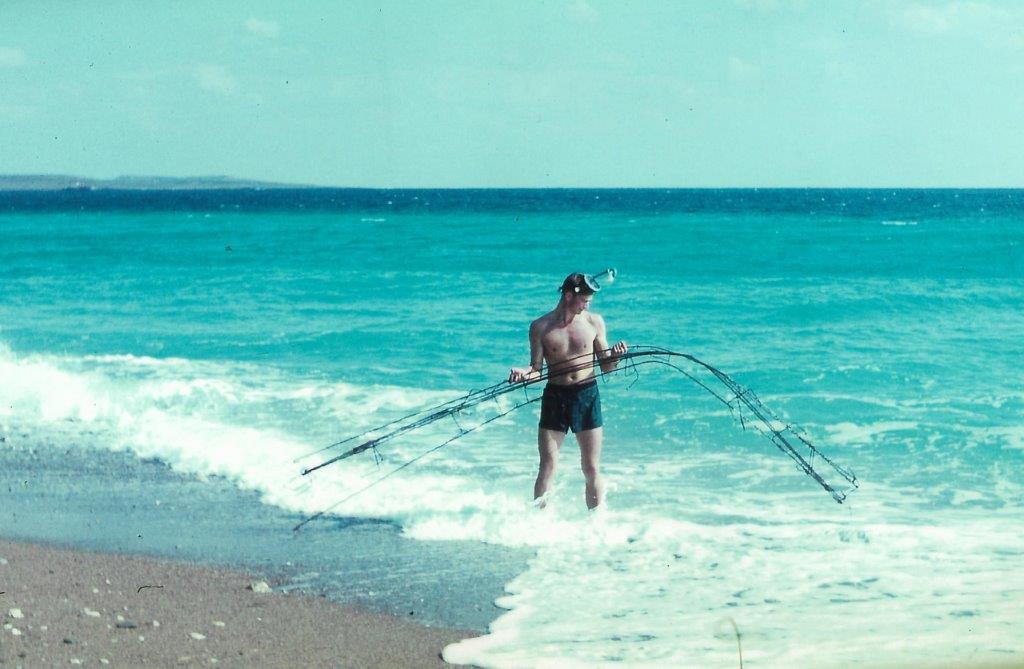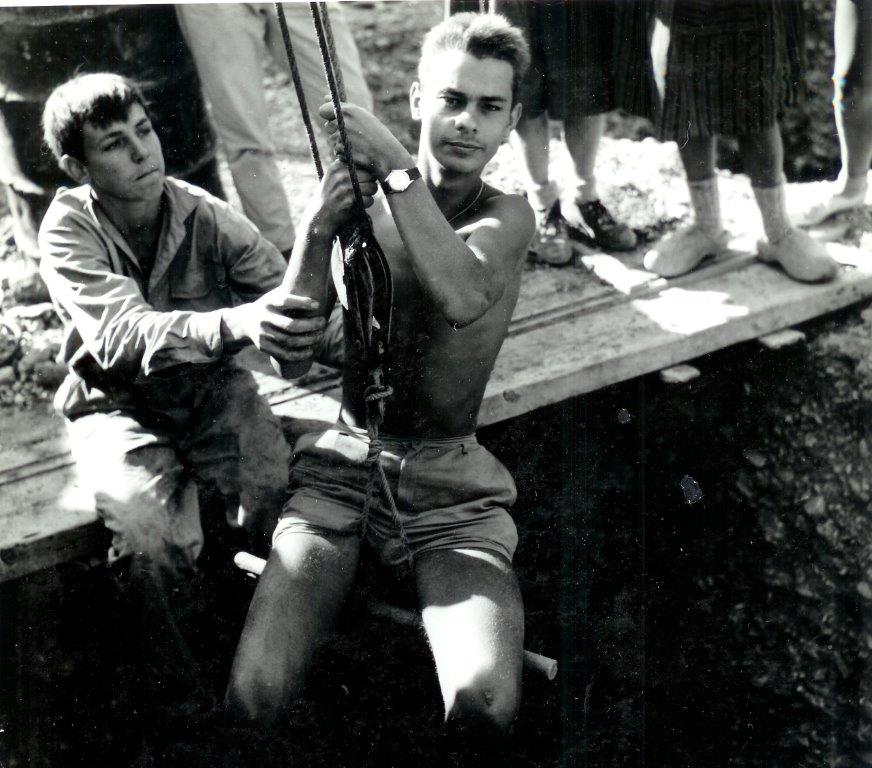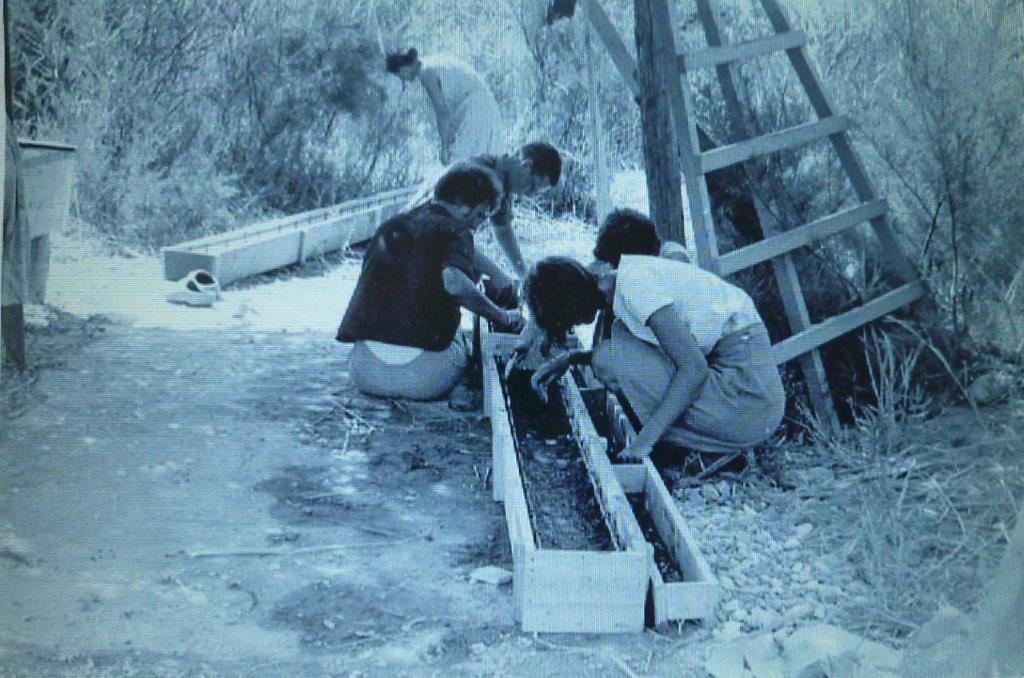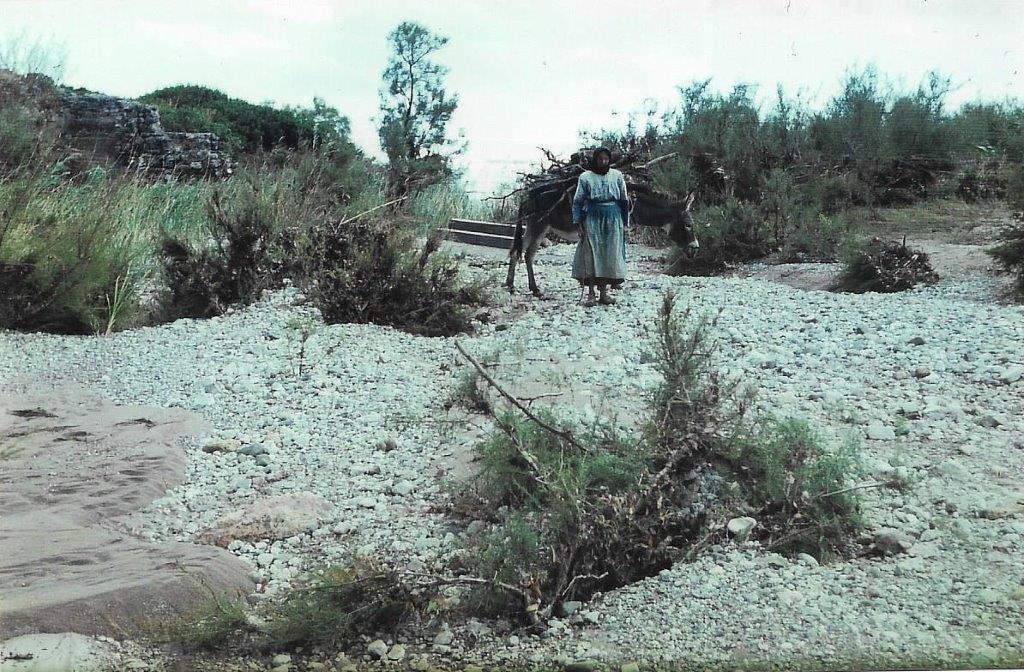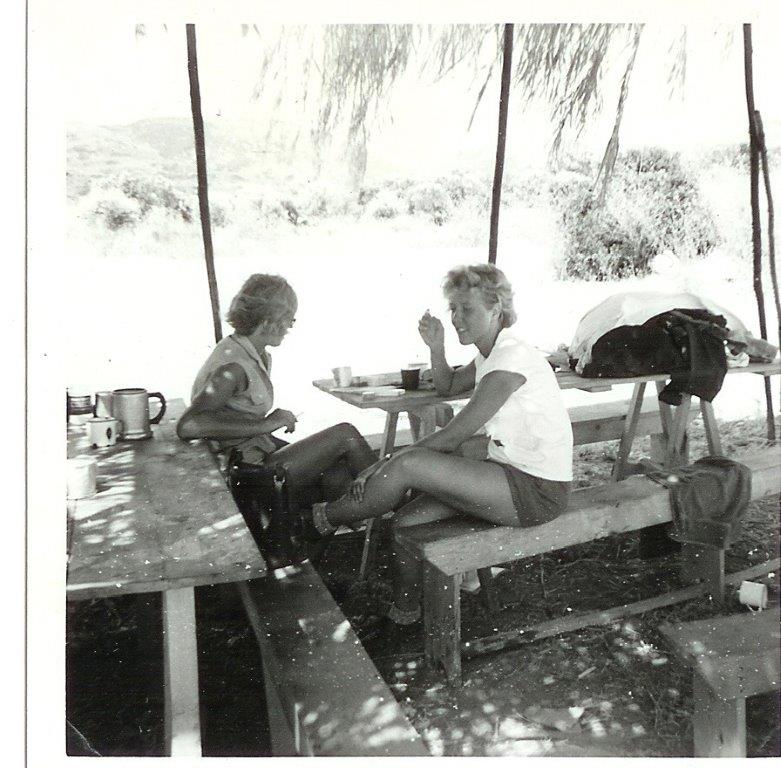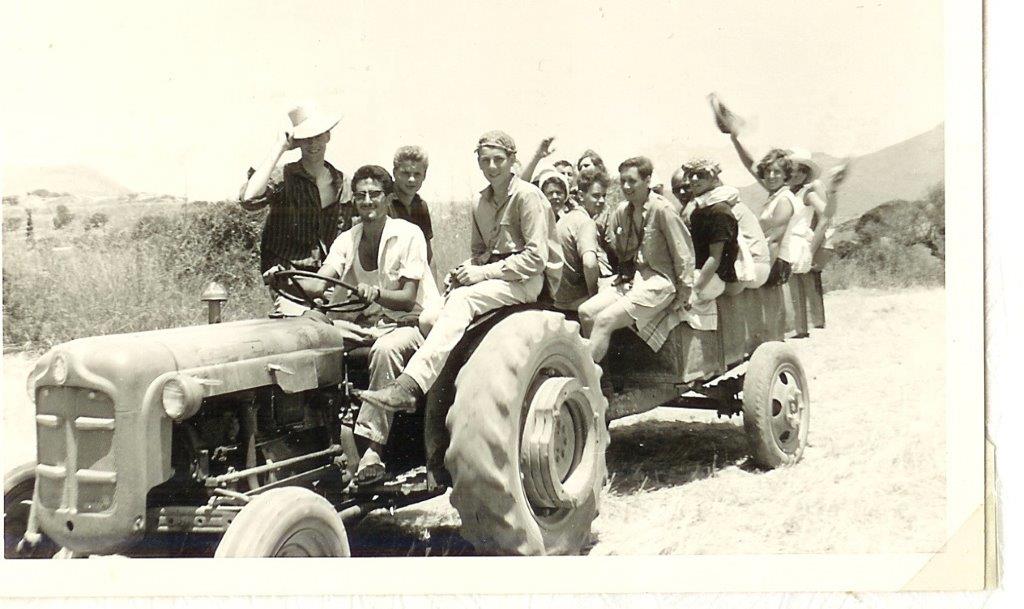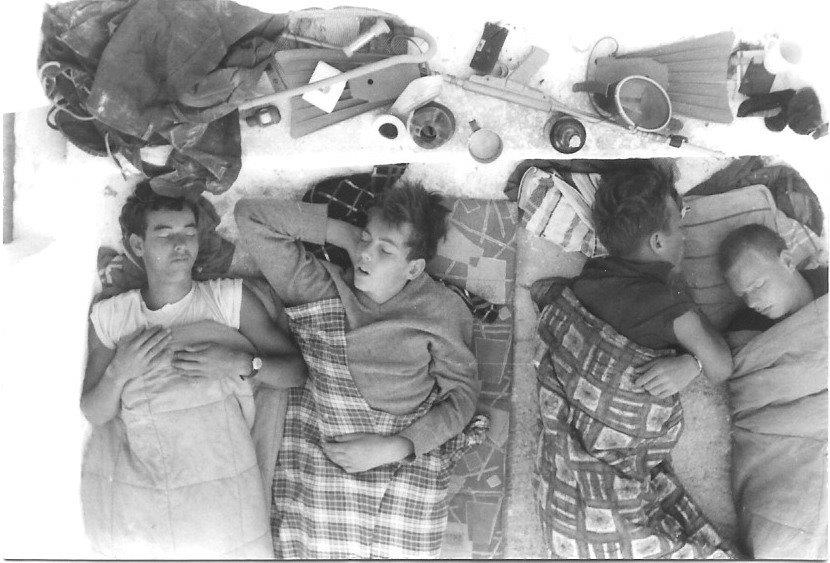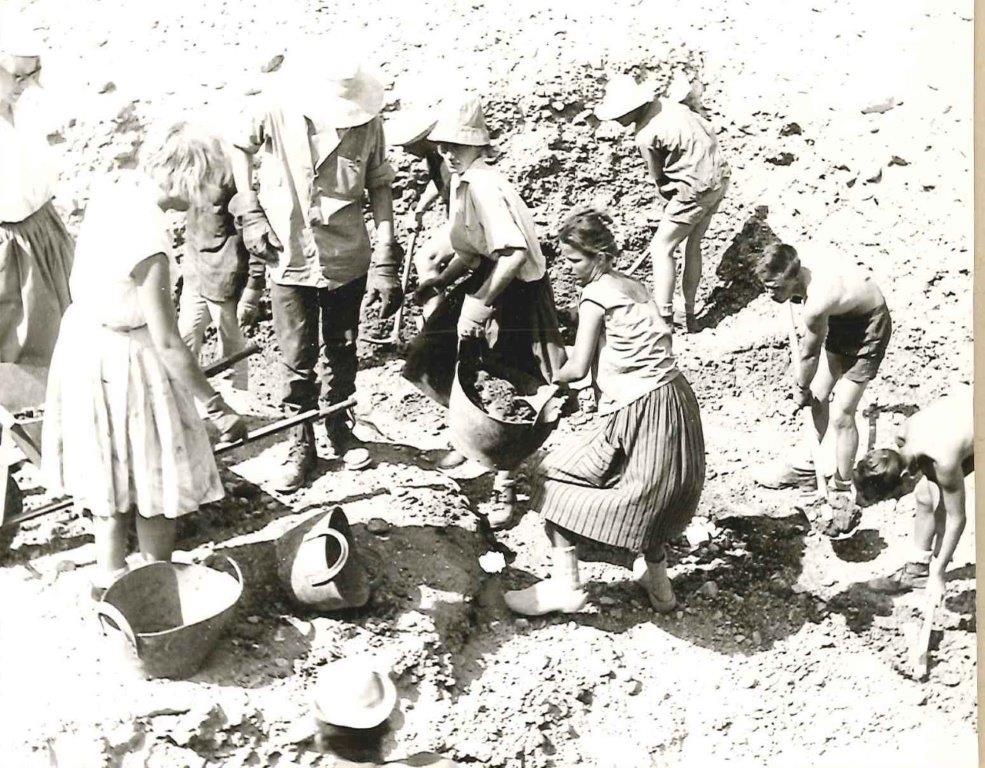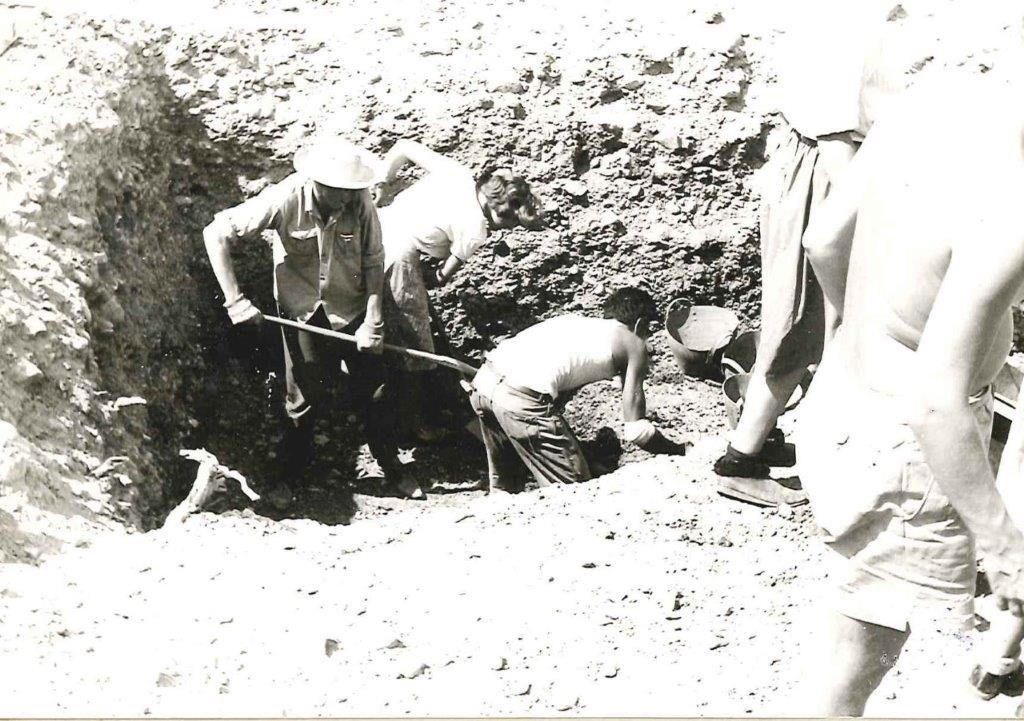Vanaf 1993 wordt er op Kythira jaarlijks de gratis Kythera Summer Edition uitgegeven. Dit blad geeft in het Engels en Grieks toeristische informatie voor bezoekers van het eiland.
In de Kythera Summer Edition van 2011 werd mijn artikel over het zomerkamp Paleopolis gepubliceerd.
WCC Team-Kythera summer camp Paleopolis 1965.
As of May 1960 Anna and George Koksma, from the Netherlands, worked at Kythira to improve living conditions on this in those years still remote island.
To their opinion the plain of Paleopolis with 2 large rivers was the most likely place to combine three of their main programmed projects: water economy, agricultural reform and promotion of tourism.
To start with such a project however one needed a lot of water. A governmental hydrologist had pointed out a place 1500 m inland at a sharp curve of the dry riverbed towards Mitata. There a large well could be dug.
Some 25 volunteers, boys and girls, age 18 to 25, were to arrive mid-July to camp at least 3 weeks in a corn field along the riverbed and close to the beach. Daily by tractor they had to be transported up the dry riverbed.
One week before they were to arrive I already camped on the beach and with some local help I erected a shade near a fig tree next to a small well and had 2 wooden box toilets installed above holes dug in the dense weeds at the edge of the field, separating boys and girls. Neither drinking water nor electricity was available!
The volunteers arrived from Holland, 60 hours by train, 12 hours by boat, in the middle of the night at Agia Pelagia and were taken by bus to Paleopolis.
Next morning, after everybody making acquaintance, three working parties were formed for the daily work that had to be performed:
- digging the well, 2- fabricating drain channels, 3- the kitchen group.
– The kitchen party, mainly girls, organized breakfast, midday and evening meals. For some reason the evening meals could not fill all the hungry stomachs and many of us were compelled to walk to Avlemona to still our appetite.
After the kitchen party had cleaned up after breakfast, they could help in one of the other working parties.
– The fabricating of 3-meter-long drain channels was done close to the camp. On a flat concreted area, a steel rebar cage was made and placed in a cleverly designed wooden formwork (by carpenter Yannis Koutsouris from Chora) and filled with on the spot made concrete with sieved sand and gravel from the riverbed.
– To dig the well a square of over 5 meters sides* was set out at the proposed location. Loose stones, pebbles and sand were removed. When they got deeper the team’s compressor (worked by Panayotis o Psilos from Frilingianika) is required to work loose hard spots and when we must use dynamite to break too large stones everybody had to vacate to a very safe location. A wooden lifting device is constructed to lower people in the pit and to lift excavated material out. Deeper and deeper they went, the soil became moist, but no water was found.
To avoid wry faces the volunteers changed places regularly in the various groups as especially the work near the camp was considered less hard.
The hot afternoon they could spend swimming and sunbathing. In the weekends trips by bus or tractor pulled trailer were organized to see some more of the island.
When the volunteers had left, a safety barrier, a heavy stone dam, had to be constructed, to avoid that winter rains would fill the well with loose material. This construction started in September by a work party from Fratsia. By the end of October however a torrential rain fall caused a high flood through the riverbed and filled the well completely. One unused steel rebar cage was even swept into the sea. Although this was a severe setback the dam is finished. Then in November even more rain falls, and part of the dam is toppled over.
This now is seen as an ill omen and the work has never been taken up again. Nowadays a small part of this dam still can be seen.
Jean Bingen
* Indien we nu naar de foto’s kijken, moet dit wel bijna 10 x 10 m zijn geweest! Natuurlijk werden er bij het dieper worden van de put steunrichels aangebracht.

